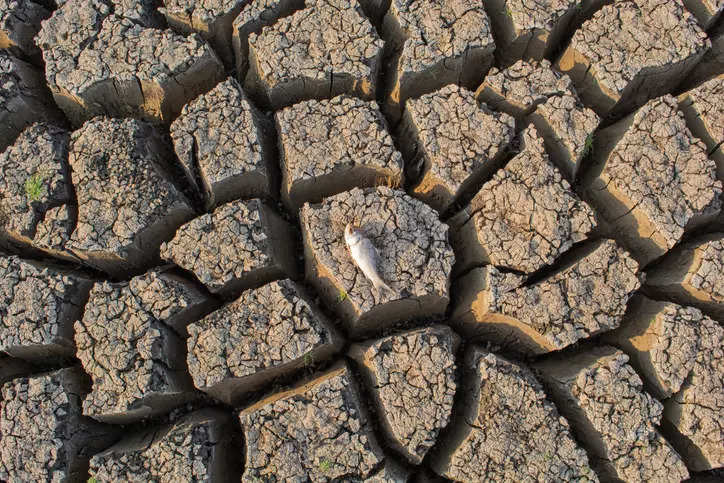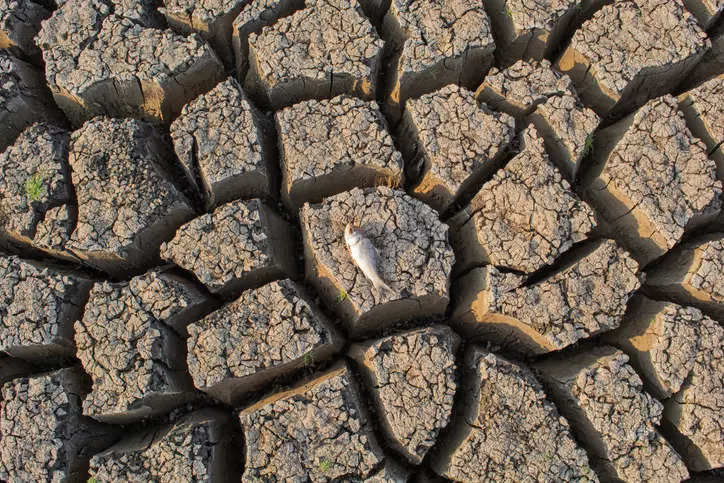
One of the most acclaimed climate fiction novels of recent times, ‘The Ministry for the Future’ by Kim Stanley Robinson, paints a grim, alarming, and desperate picture of the people in an ordinary town in Uttar Pradesh struggling to survive an unprecedented heat wave. The deadly combination of heat and humidity and the impaired electricity infrastructure described in the fiction novel is not too far off from our current reality in India, where heat waves are getting more frequent and more intense with every passing year. While some actions in response to heat waves do exist in a couple of regions in India, a national level plan and policy to tackle the looming heat crisis is still missing.India is heating up faster than most of the world. In fact, 11 out of 15 warmest years in India occurred after 2007. Much of India did not have a spring season last year with March seeing temperatures as high as those typically observed during May and June. Not only are heat waves becoming more frequent, they are also intensifying in severity. The annual number of heat wave days and the number of states affected by them have increased in the past few years. High humidity increases the “feels like” temperature. The combination of heat and humidity, measured using wet bulb temperature (WBT), has started to touch the 32 ° C mark in several parts of the country and is even expected to breach 34 ° C in the next 8 years. How bad is this? Even heat-adapted people cannot carry out regular outdoor activities beyond a WBT of 32°C. Alarmingly, there have been instances of alarmingly high WBTs in five major cities of India between 2018 and 2022. Such extreme heat events, which were anomalies in the past, will become the norm in the very near future. Scientific evidence cites global warming as the main culprit behind this unprecedented heating in India.The repercussions are unequal. Those who contribute the least to global warming by means of greenhouse gas emissions are most adversely impacted. The growing intensity of heat waves brings to the fore the stark “heat divide” between the “cool haves” and the “hot have-nots”. 75% of the Indian labor force works outdoors, in heat-exposed sectors such as agriculture, mining, and construction. Further, load shedding events, driven by insupportably high air-conditioning loads from those who can afford it, almost always cut off those people from the grid who did not add to the peak demand in the first place.The asymmetrically distributed impacts of increasingly frequent extreme heat events calls for an urgent mitigation and adaptation preparedness plan in India. The ‘Guidelines for Preparation of Action Plan – Prevention and Management of Heat Wave’ by the National Disaster Management Authority (NDMA), Government of India sets out elaborate guidelines to combat the impact of heat waves. Based on these guidelines, several states, including Odisha, Telangana, Rajasthan, Kerala, Maharashtra, Uttar Pradesh, Haryana, and cities such as Ahmedabad, Nagpur, and Surat have formulated Heat Action Plans (HAPs). These plans are largely designed to help authorities and communities to react to occurrences of heat waves, as opposed to implementing comprehensive steps towards adaptation and mitigation.
A systematic, coordinated, and well-defined approach towards addressing and mitigating the impacts of the country is imperative. It warrants the need for integrated policymaking both laterally through parallel ministries and departments and vertically through different tiers of government, with one nodal agency such as NDMA to create a national heat action and adaptation plan. Supporting this approach should be an ecosystem of nongovernmental actors from both the private sector and knowledge sector comprising civil society organisations, and academia. A successful example of such integrated policy making is the India Cooling Action Plan (ICAP) 2019, whose overarching goal is to provide sustainable cooling and thermal comfort for all while securing many environmental and socio-economic benefits for the society. ICAP is widely recognised as a model national cooling action plan and its development process demonstrated high inter-ministerial collaboration and active participation from the triple sector.
Along this line, a model of integrated cross-sectoral policymaking with NDMA at the core, and lateral integration between various ministries and departments such as Indian Meteorology Department (IMD) of Ministry of Earth Sciences and National Centre for Disease Control (NCDC) of Ministry of Health and Family Welfare would do well to strengthen the state and city level HAPs. Efficient decentralisation and enhanced coordination between different levels of government is indispensable for effective policymaking and implementation to suit regional realities and local communities. Such context based policy making and decentralised implementation can ensure thermal comfort for a billion lives.
[This piece was written by Akash Goenka, Team Lead; Alisha Abraham, Research Associate; and Simrat Kaur, Research Associate, at AEEE]


